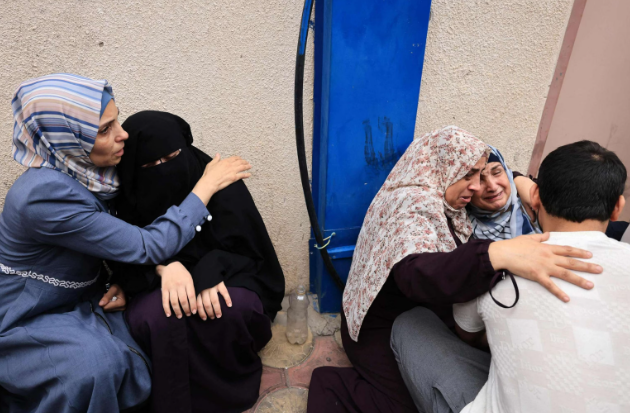Gaza is among the poorest places in the world, a United Nations report found.
Israel’s military mounted a total siege of the Gaza Strip on Monday, cutting off the entry of food and other supplies for more than two million people.
The move came in response to an attack from militant group Hamas on Saturday that has left at least 700 people dead and more than 2,300 injured in Israel.
“It is an unprecedented attack and it will be followed by an unprecedented Israeli response,” Lt. Col. Jonathan Conricus, spokesperson for the Israel Defense Forces, told ABC News Live.
At least 560 people have died and another 2,900 have been injured by Israeli airstrikes in the Gaza Strip since Saturday, according to the Palestinian Ministry of Health.
The military escalation and siege are expected to worsen conditions in a 141-square-mile stretch of territory that human rights advocates have called “an open-air prison.”
In 2021, António Guterres, secretary-general of the United Nations, described conditions for children in the Gaza Strip as “hell on earth.”
Here’s what to know about dire conditions in the Gaza Strip, how they arose and what the ongoing conflict could mean for people living there:
What are conditions like in the Gaza Strip?
The Gaza Strip is among the poorest places in the world, according to theUnited Nations.
The region suffers from an unemployment rate of roughly 46% and a youth unemployment rate of almost 60%, a World Bank report last month found. By contrast, the unemployment rates of Israel and the U.S. each stand below 4%, Moody’s Analytics data shows.
The sluggish economy has imposed acute shortages of essential goods, such as food and medicine.
Insufficient investment in infrastructure and medical facilities, meanwhile, has contributed to an environment in which patients regularly lack access to much-needed medication, the World Bank report said last month.
For some severely ill people, such as cancer patients, insufficient medical care and an inability to travel beyond the Gaza Strip have resulted in “the serious worsening of health conditions or even the death of patients,” the World Bank report said.
In 2021, the Biden administration approved $235 million in aid to the Palestinians, including $150 million for the United Nations Relief and Works Agency and $75 million for economic assistance in the West Bank and Gaza.
The move restored a policy of humanitarian aid contributions for the Palestinians that had been suspended under then-President Donald Trump in 2018.
What caused these difficult circumstances?
The Gaza Strip has faced a blockade carried out by Israel and Egypt since Hamas took control of the territory in 2007.
The blockade, which restricts the movement of people and goods, is a necessary means of preventing weapons and attackers from entering Israel, Israeli officials have said.
Human rights groups, however, have faulted the blockade for worsening the economic conditions endured by people in the Gaza Strip.
The blockade caused $16.7 billion in economic losses between 2007 and 2018 — an amount six times larger than the annual economic output in the Gaza Strip, a United Nations report found in 2020.
Moreover, the blockade raised the poverty rate fourfold than it otherwise would have been in the absence of the policy, the United Nations report found.
Last month, the World Bank also cited the blockade as a key cause of widespread poverty in the Gaza Strip, though the group also noted other factors, such as governance issues in the region.
How could the military conflict affect people living in the Gaza Strip?
In recent years, human rights groups have warned that a renewal of military conflict between Israel and Hamas would exacerbate the dire conditions faced by Palestinians living in the Gaza Strip.
“The Gaza Strip has been the subject of three major rounds of military hostilities since 2008,” the United Nations said in 2020. “The result is the near collapse of the regional Gaza economy.”
The complete siege launched by Israel on Monday could tighten import-export restrictions currently in place under the blockade.
“This is a strategy to starve the population,” Human Rights Watch Israel and Palestine Director Omar Shakir told ABC News Live.
Meanwhile, the European Union said on Monday that it is suspending hundreds of millions of dollars in aid to the Palestinians amid the conflict.
Last month, the World Bank warned that a military escalation in the region would deepen its economic problems.
“Further escalation of clashes between Palestinians and Israeli forces in the West Bank and Gaza would increase economic uncertainty,” the World Bank said.
